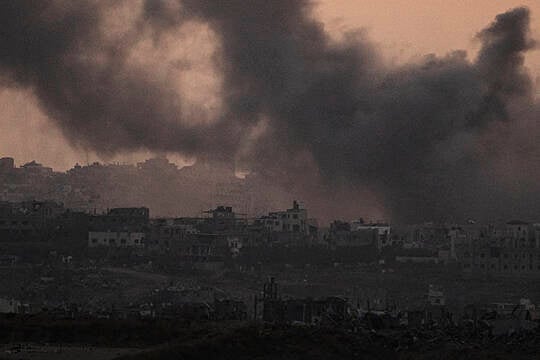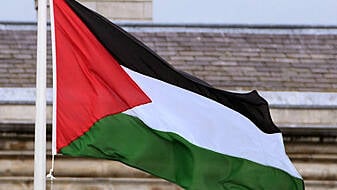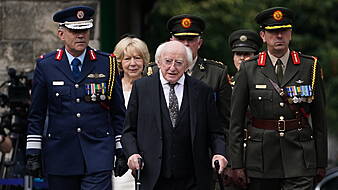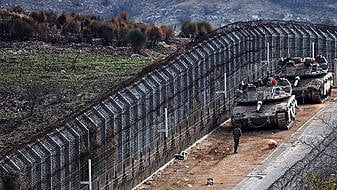Renewed Israeli shelling and strikes have killed at least 37 people, most of them sheltering in tents, outside the southern Gaza city of Rafah, according to witnesses, first responders and hospital officials.
The strikes overnight and on Tuesday pummelled the same area where strikes had triggered a deadly fire that swept through a camp for displaced Palestinian, they said.
The tent camp inferno has drawn widespread international outrage, including from some of Israel’s closest allies, over the military’s expanding offensive into Rafah.
And in a sign of Israel’s growing isolation on the world stage, Spain, Norway and Ireland formally recognised a Palestinian state on Tuesday.
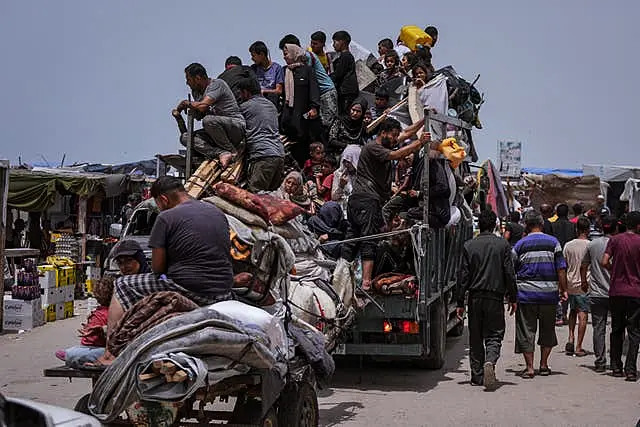
The Israeli military suggested Sunday’s blaze in the tent camp may have been caused by secondary explosions, possibly from Palestinian militants’ weapons.
The results of Israel’s initial probe into the fire were issued on Tuesday, with military spokesman Rear Admiral Daniel Hagari saying the cause of the fire was still under investigation but that the munitions used – targeting what the army said was a position with two senior Hamas militants – were too small to be the source.
The strike or the subsequent fire could also have ignited fuel, cooking gas canisters or other materials in the camp.
The blaze killed 45 Palestinians, according to Gaza health officials’ count.
Israeli prime minister Binyamin Netanyahu said the fire was the result of a “tragic mishap”.
Israel’s assault on Rafah, launched on May 6th, has caused more than one million people to flee the city, the UN agency helping Palestinian refugees said on Tuesday.
Most had already been displaced multiple times in the nearly eight-month war between Israel and Hamas.
Families are now scattered across makeshift tent camps and other war-ravaged areas.
The strikes over the past few days have hit areas west of Rafah, which had not been ordered by the military to evacuate.
Israeli ground troops and tanks have been operating in eastern Rafah, in central parts of the city, and along the Gaza-Egypt border.
Shelling late on Monday and early on Tuesday hit Rafah’s western Tel al-Sultan district, killing at least 16 people, the Palestinian Civil Defence and the Palestinian Red Crescent said.
Seven of the dead were in tents next to a UN facility about 200 metres from the site of Sunday night’s strike and fire.
“It was a night of horror,” said Abdel-Rahman Abu Ismail, a Palestinian from Gaza City who has been sheltering in Tel al-Sultan since December.
He said he heard “constant sounds” of explosions overnight and into Tuesday, with fighter jets and drones flying over the area.
He said it reminded him of the Israeli invasion of his neighbourhood of Shijaiyah in Gaza City, where Israel launched a heavy bombing campaign before sending in ground forces in late 2023.

“We saw this before,” he said.
The United States and other allies of Israel have warned against a full-fledged offensive in the city, with the Biden administration saying that would cross a red line and refusing to provide offensive arms for such an undertaking.
On Friday, the International Court of Justice called on Israel to halt its Rafah offensive, an order it has no power to enforce.
On Tuesday afternoon, an Israeli drone strike hit tents near a field hospital by the Mediterranean coast west of Rafah, killing at least 21 people, including 13 women, the Gaza Health Ministry said.
A witness, Ahmed Nassar, said his four cousins and some of their husbands and children were killed in the strike and that a number of tents were destroyed or damaged.
Most of those living there had fled from the same neighbourhood in Gaza City earlier in the war.
“They have nothing to do with anything,” he said.
Mr Netanyahu has vowed to press ahead, saying Israeli forces must enter Rafah to dismantle Hamas and return hostages taken in the October 7th attack that triggered the war.

In its investigation of Sunday’s deadly strike and fire, the Israeli military released satellite photos of what it said was a Hamas rocket launch position about 40 metres from an area of sheds that was targeted.
In the photo, the alleged launcher itself did not appear to have been struck.
Rear Admiral Hagari said Israeli warplanes used the smallest munition possible – two munitions with 17-kilogram warheads.
“Our munition alone could not have ignited a fire of this size,” he said.
Rear Admiral Hagari said that the fire was “a devastating incident which we did not expect” and said it ignited due to “unforeseen circumstances”.
Still, the strikes have triggered a flight of people from areas west of Rafah.
Sayed al-Masri, a Rafah resident, said many families were heading to the crowded Muwasi area or to Khan Younis, a southern city that suffered heavy damage during months of fighting.
“The situation is worsening” in Rafah, al-Masri said.

Gaza’s Health Ministry said two medical facilities in Tel al-Sultan are out of service because of intense bombing nearby.
Medical Aid for Palestinians, a charity operating throughout the territory, said the Tel al-Sultan medical centre and the Indonesian Field Hospital were under lockdown, with medics, patients and displaced people trapped inside.
Most of Gaza’s hospitals are no longer functioning.
Rafah’s Kuwait Hospital shut down on Monday after a strike near its entrance killed two health workers.
A spokesperson for the World Health Organisation said the casualties from Sunday’s strike and fire “absolutely overwhelmed” field hospitals in the area, which were already running short on supplies to treat severe burns.
“That requires intensive care, that requires electricity, that requires high-level medical services,” Dr Margaret Harris told reporters in Geneva.
“Increasingly, we are struggling to even have the high-level skilled doctors and nurses because they’ve been displaced.”

The war began when Hamas and other militants burst into southern Israel in a surprise attack on October 7th, killing some 1,200 civilians and abducting around 250.
More than 100 were released during a week-long ceasefire in November in exchange for Palestinians imprisoned by Israel.
Israel responded to the attack with a massive air, land and sea offensive that has killed at least 36,096 Palestinians, according to Gaza’s Health Ministry, which does not distinguish between fighters and civilians in its count.
Around 80 per cent of Gaza’s population of 2.3 million has been displaced and United Nations officials say parts of the territory are experiencing famine.
The fighting in Rafah has made it nearly impossible for humanitarian groups to import and distribute aid to southern Gaza.
The Israeli military says it has allowed hundreds of trucks to enter through the nearby Kerem Shalom crossing since the start of its operation, but aid groups say it is extremely difficult to access that aid on the Gaza side because of the fighting.
The UN says it has only been able to collect aid from around 170 trucks over the past three weeks via Kerem Shalom.
